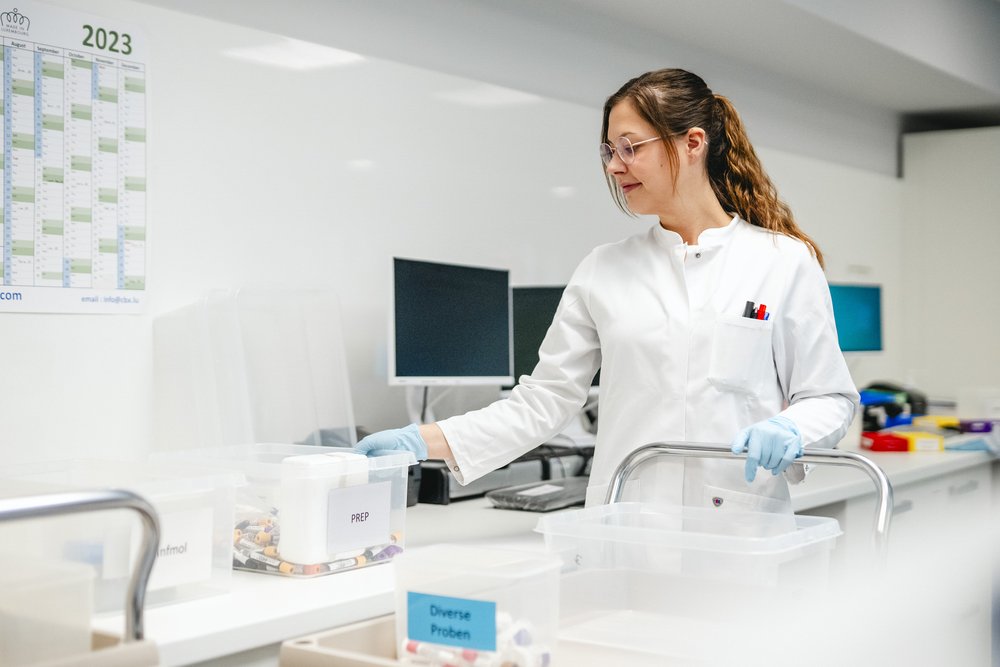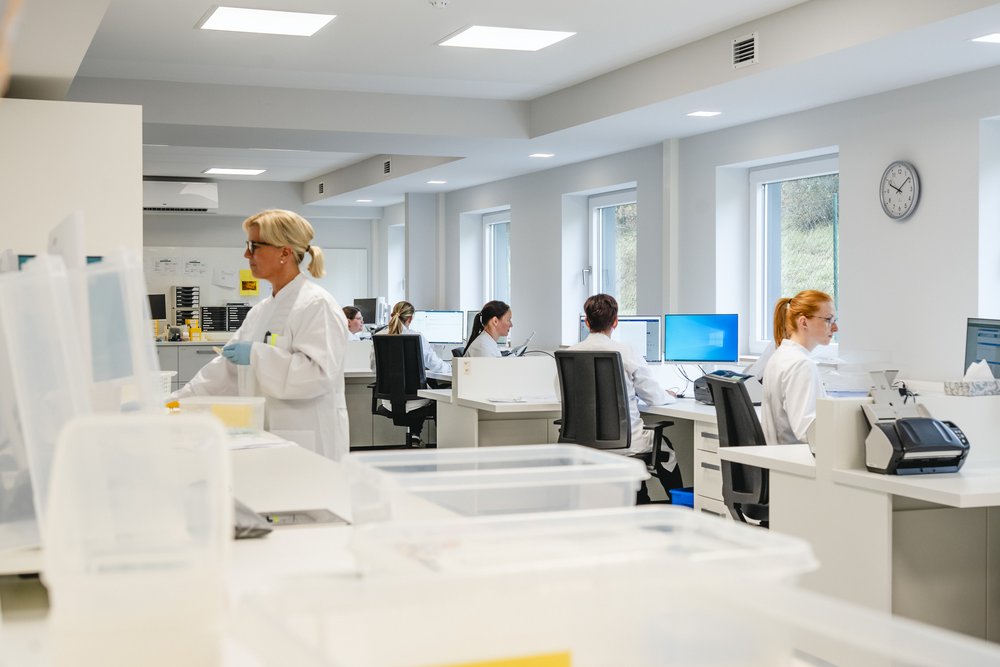
Lyme borreliosis
What is it all about?
The disease caused by tick bites can manifest itself in a variety of dermatological, neurological, joint and cardiac manifestations, making it difficult to diagnose and posing a real therapeutic challenge.
Lyme disease takes its name from the town of Lyme, Connecticut, in the United States, where there was a high incidence of inflammatory arthritis associated with tick bites.
Lyme borreliosis is the most common tick-borne bacterial disease in Europe.

The clinical manifestations are varied;
the chronic form, in particular, with inflammation of the nervous system, heart muscle and joints, represents a therapeutic challenge.
Effective diagnostic tests are therefore essential if appropriate treatment measures are to be put in place.
Serological test
The test is carried out according to a multi-stage diagnostic protocol. If the screening test (CLIA) is positive, a confirmatory immunoblot test is performed.
It should be noted that antibody production during the primary phase occurs at the earliest between 3 and 6 weeks after infection (IgM), or even later (IgG). Serology is therefore negative in more than 50% of cases during the early phase of erythema migrans.
Moreover, antibodies may persist even after antibiotic treatment.

EliSpot Borrelia Test
This EliSpot test measures the quantity of cytokines (interferon gamma and IL-2) produced by T lymphocytes. It can therefore be used to detect an active infection, either acute or chronic, with Borrelia burgdorferi. The advantage of the EliSpot test is that it is highly sensitive and can be used at an early stage of infection (even before antibodies are detectable). This test can be used as a second-line test in cases of doubtful clinical/ serological diagnosis, unexplained rheumatological disorders (Lyme arthritis) or to monitor the effectiveness of antibiotic treatment. It can also detect reactivation or reinfection. (Please note that the EliSpot test is only available from our blood testing centres in Luxembourg.)

Direct PCR diagnosis for the identification of borreliosis
The test can be carried out on either a live or a dead tick.
If the tick from which the bite originated can be recovered, it is important to send it to the laboratory for identification of the borreliosis, so that antibiotic prophylaxis can be better directed.

LTT or TTL Borrelia
The LTT can be used as an additional diagnostic criterion to confirm a recent and active infection. This test detects an immune response by circulating lymphocytes directed against borrelia antigens. A positive result therefore indicates an immune system response against the pathogen at the time of blood sampling. This test is recommended in the presence of clinical signs of borreliosis, in the event of doubtful serological results, in the event of persistent borreliosis after antibiotic therapy, to monitor the effectiveness of ongoing antibiotic therapy or in the event of suspected reactivation of a Borrelia infection. (Note that the LTT Borrelia test is only available from our blood sampling centres in Luxembourg).


